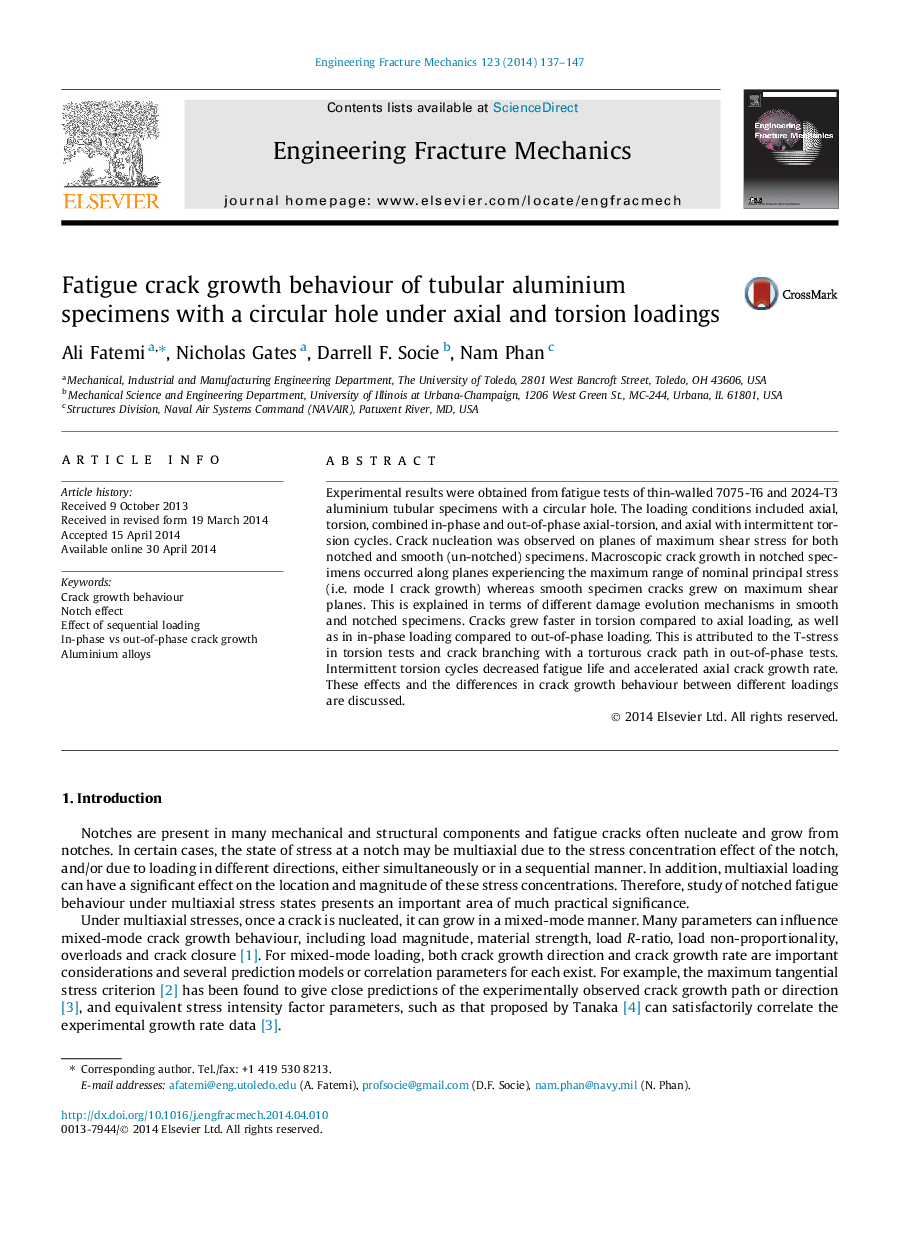| Article ID | Journal | Published Year | Pages | File Type |
|---|---|---|---|---|
| 774733 | Engineering Fracture Mechanics | 2014 | 11 Pages |
•Fatigue tests were performed on tubular specimens of 7075-T6 and 2024-T3 aluminium under axial, torsion, and combined loads.•Details and discussion on the discrepancy between crack growth direction in smooth and notched specimens is presented.•Differences in crack growth rate between different loading conditions are presented along with explanations.•Intermittent torsion cycles were found to decrease fatigue life and accelerate axial crack growth rate.
Experimental results were obtained from fatigue tests of thin-walled 7075-T6 and 2024-T3 aluminium tubular specimens with a circular hole. The loading conditions included axial, torsion, combined in-phase and out-of-phase axial-torsion, and axial with intermittent torsion cycles. Crack nucleation was observed on planes of maximum shear stress for both notched and smooth (un-notched) specimens. Macroscopic crack growth in notched specimens occurred along planes experiencing the maximum range of nominal principal stress (i.e. mode I crack growth) whereas smooth specimen cracks grew on maximum shear planes. This is explained in terms of different damage evolution mechanisms in smooth and notched specimens. Cracks grew faster in torsion compared to axial loading, as well as in in-phase loading compared to out-of-phase loading. This is attributed to the T-stress in torsion tests and crack branching with a torturous crack path in out-of-phase tests. Intermittent torsion cycles decreased fatigue life and accelerated axial crack growth rate. These effects and the differences in crack growth behaviour between different loadings are discussed.
